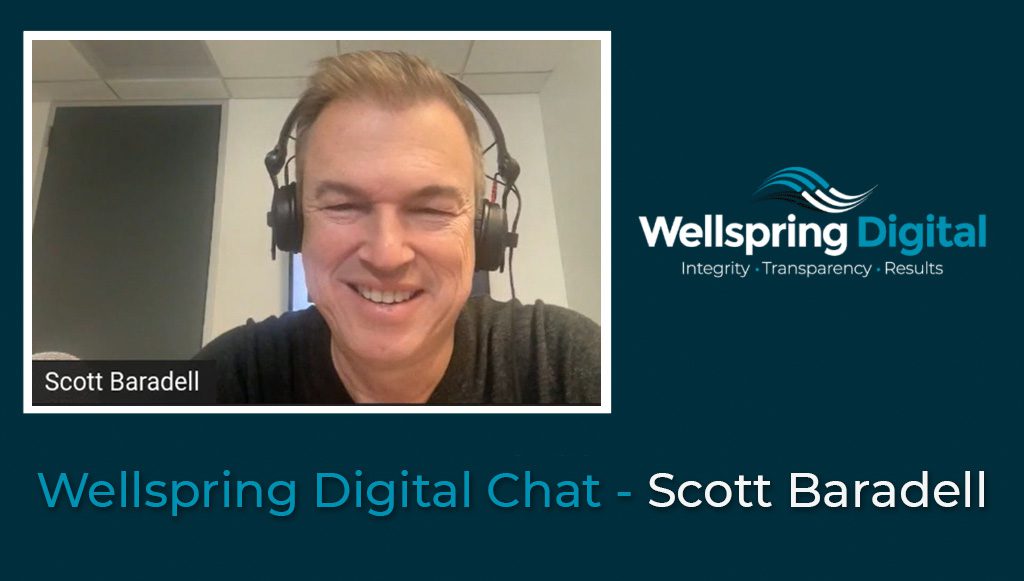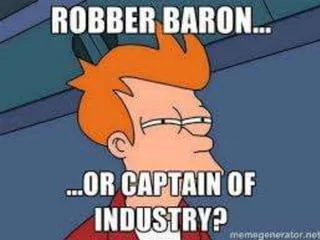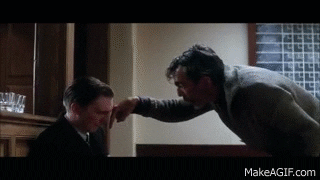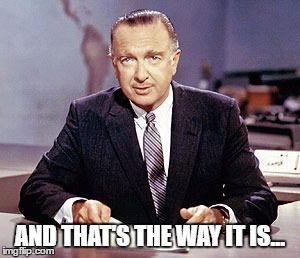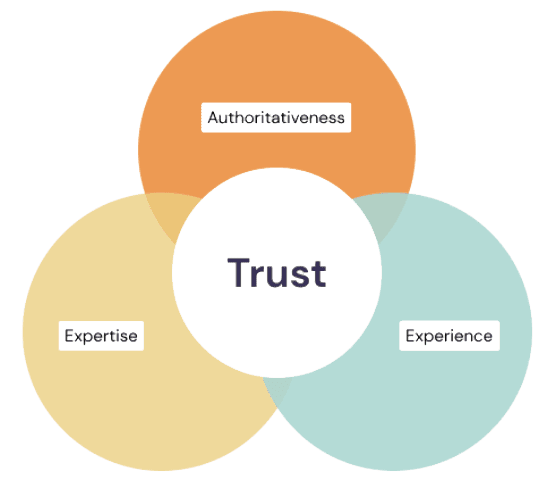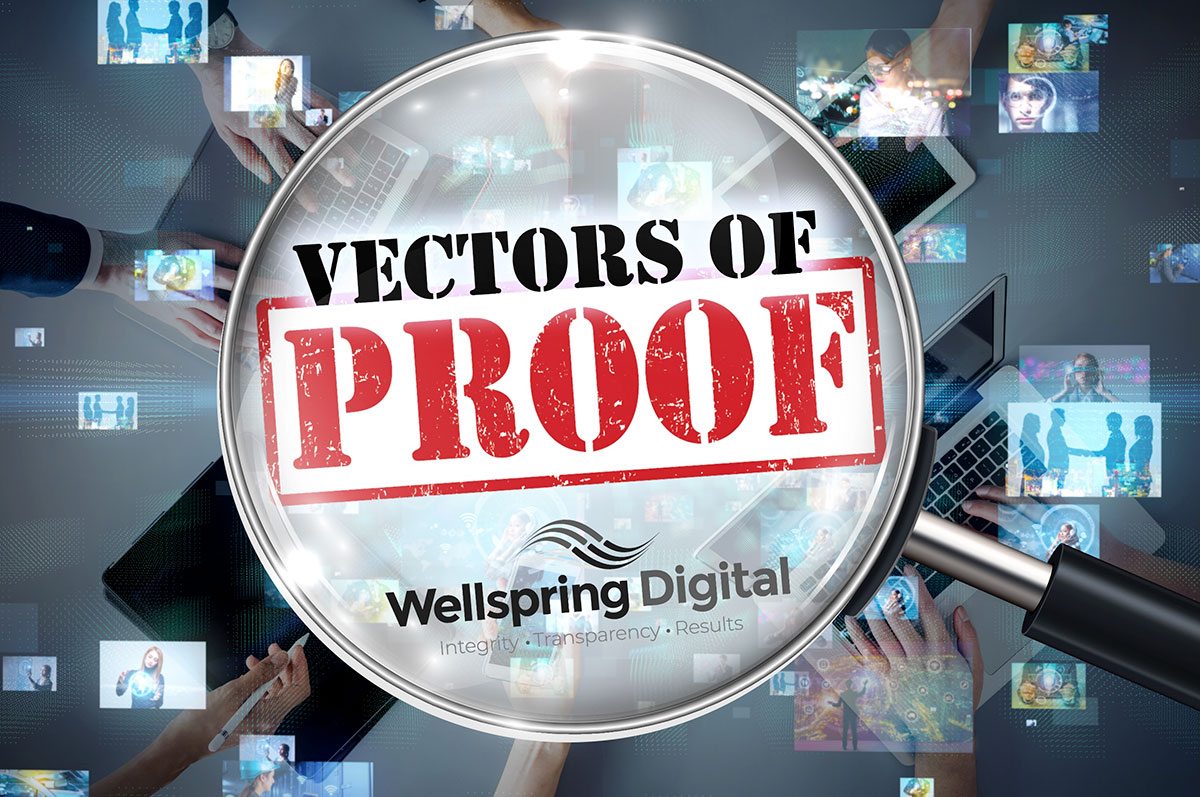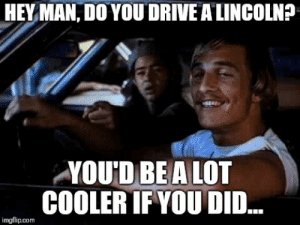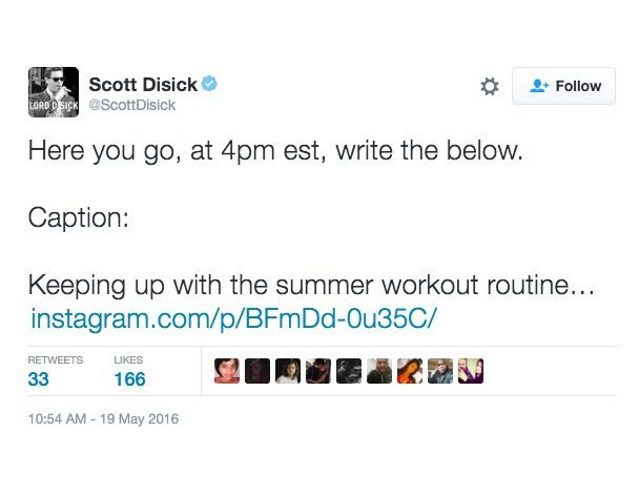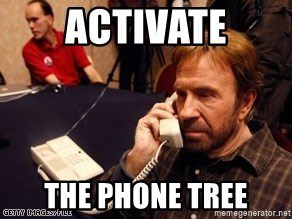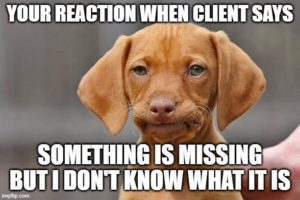When my friend and Wellspring Digital Chat alum, Gini Dietrich, makes a recommendation, take it! Gini posted the introduction to Scott’s book, Trust Signals: Brand Building in a Post-Truth World, on her blog, and when I got to his new definition of PR, I was hooked!
I was in, all the way! I bought the book and devoured it! Buy Trust Signals here! But first, check out this interview I do with Scott. Something tells me it will enhance your reading experience.
Scott and I dive into the following…
- Redefining PR and how this definition came about
- Google E-E-A-T and why trust is at the center of it all
- Influencer Marketing and influence as a continuum
- Website trust signals and why it’s more than just design
- Is building trust a marketer’s most important task?
Let’s dive in!
Digital Transcription (Edited for Readability)
Introductions
Jon-Mikel Bailey: Hello, everybody. I am Jon-Mikel Bailey and this is the Wellspring Digital Chat series. Today, we come to you live from a secret bunker, far underground, where all of the marketing secrets are kept. We’ve gotten a list of approved secrets and we’re going to share those with you today. The delivery system for those secrets will be my guest, Scott Baradell.
Scott Baradell: Heavily redacted.
Jon-Mikel Bailey: Heavily redacted. Yeah, you’ll only get the sanitized version. DM me, I might be able to give you the real stuff. As many people who watch this show know, I have, I have mental problems. Something’s wrong with me. And I feel forced to do these really silly, goofy intros every time and I can’t help it.
But anyway, I first became aware of Scott, when my friend and Wellspring Digital Chat alum Gini Dietrich posted the introduction to Scott’s book, which is called Trust Signals. And I will post the link and you will need to buy it, I promise you, it’s well worth it.
And, you know, once I read that first introduction, I was all in all the way. I bought the book and devoured it. I highly recommend it. And like I said, I will include a link and you’ll go and you’ll buy it.
So Scott, welcome, please take a moment to introduce yourself to our audience.
Scott Baradell: Thank you, Jon. My name is Scott Baradell, I have an agency called Idea Grove in Dallas, Texas, we do B2B Tech PR and marketing, and we’ve been doing it for 18 years now. And the last three years, I’ve spent as much time away from the business I thought are needed to try to put the ideas for this book in place. Because the goal was to then or as we’ve been doing it to then kind of take those ideas and implement them in practice at the agency, which I think we’ve kind of been doing in a more piecemeal way.
But I thought, gosh, if I can really structure my thinking, and force it into the organization, all the organization that’s needed to write a coherent book, then it could help us have a more streamlined strategy as an agency. So that was the idea of the book. But then I thought, gosh, you know, ultimately, the ideas hopefully can help any PR agency. That was the first goal, and to modernize, I guess.
And then the second goal was, you know, there are a lot of just practical ideas for anyone who owns a business, small or large, or marketers are ways that they can build their brands too. So that’s who I am. And that’s kind of how it evolved into the book. But first, I have to say, I loved your intro at the beginning. It made me think of Netflix or something that, you know, there’s a whole sidebar in the book on these oral taglines and, and different sounds and music and how you link them to your brand.
How did you decide on the intro? I’m not kidding, I actually think it’s quite good. And it made me think of that. So how did you come up with that?
Jon-Mikel Bailey: Honestly, it was just, I think we used one of the, like, Fiverr or something like that. And
Scott Baradell: Don’t say, Fiverr, did it cost $5? Yeah, no, it’s great.
Jon-Mikel Bailey: Thanks, Scott. No, I think we paid a little more than five bucks. But yeah, we went out and found a freelancer who did a little intro. And that was the one that just felt like it. It really sort of worked in terms of our name, our brand, and the concept of Wellspring and Digital. It just all kind of came together just perfectly. So thank you.
Yeah, I appreciate it. So, basically what you’re saying is the motivation for the book was purely selfish reasons. And I think that’s the American way. If you try to succeed personally, it will benefit society as a secondary benefit.
Scott Baradell: There you go. Like that. I think I read that in economics.
Jon-Mikel Bailey: Vote Republican. Anyway, I can’t believe I just said that anyway. So yeah, we’re gonna talk. Yeah, well,
Scott Baradell: We’ll cut you said Trump elsewhere.
Jon-Mikel Bailey: We’re gonna talk, PR, we’re gonna talk SEO, we’re going to talk content. We’re going to talk about whatever Scott wants to preach. Scott, you’re ready to do this?
Scott Baradell: Yeah, let’s jump in.
Jon-Mikel Bailey: Alright.
Redefining PR (Public Relations)
Jon-Mikel Bailey: For those of you who have yet to read your Book, Scott’s book, you have taken it upon yourself to offer a new definition of PR, public relations. And it’s a bold move, and I applaud it. Can you share with us your definition and a little bit about how you came to it?
Scott Baradell: I started blogging in 2005, was one of the first PR people to blog even before Gini started Spin Sucks. And I started realizing how there was such an opportunity for PR to lead in this new era, because all the things that were happening, felt like PR, to me, they were all very organic.
So much of it, if you think of early inbound marketing and all that, it was just a direct negative reaction to paid advertising, to this idea of having these messages and banner ads and other things shoved down your throat. And the idea of creating more authentic connections. Well, PR, if done right, is about building those kinds of organic connections, kind of earning attention by making a connection rather than paying for it.
And I thought, gosh, we can lead here, but it never happened. Because PR, I realized. And that’s why HubSpot comes around. All these other folks see SEO, online reputation management firms, take your pick all these cottage industries, they all emerged, and little by little, took all the pieces that PR could have led if they had a bigger vision.
And now PR continues to just be stuck in a corner, where it’s been for 100 years, being the junior partner to the news media. And I thought this is ridiculous. And I, you know, was like a little, Yelp in the wilderness, you know, trying to protest this. But ultimately, I had kind of fleeting ideas for how to come up with a comprehensive argument, arguing for a larger role for PR in the digital landscape.
But finally, now all these years later, it’s really come together interesting. So it’s been something that’s been in the back of my mind bugging me for a long time. And then I finally put together, at least for me, what I think is a rational, logical argument for why PR should be more than what it’s allowed itself to be relegated to be, which is the junior parts of the news media.
And when you get called a PR firm, the first thing anybody asked for is media coverage, right? And so the new definition of PR that I’ve developed, the 10-year-old now the definition of PR that the PRSA developed by, hey, they did all the right things, they asked lots of people and stuff, but ultimately, you know, they came up with a definition of…
“PR is the strategic communications process of developing mutually beneficial relationships between organizations and their constituencies.” PRSA
And yes, yes, it’s, it’s, that’s true. I like that it’s not subordinate to marketing. I like that. It’s not saying, we just get placements in the news media, that’s nice. But I’ve 15 years plus, I’ve never had any client come to me and say, Hey, can you help us establish mutually beneficial relationships? Please? No, they, they don’t want that.
So can we give them something that we can have, that means we need one that has an event. So maybe something that’s a little simpler. So the definition I developed is that…
“PR is the art of securing trust at scale.” Scott Baradell definition of PR
I say at scale because, if you think about marketing versus sales, what you’re trying to do in marketing is ultimately scale. What works in sales? So if you’re a salesperson who’s just hard sell, trying to sell your stuff, whatever. Good luck.
If you’re a salesperson who knows how to establish relationships and rapport with people, maybe take a genuine interest in them, “how’s the kids? How’s the wife?” All those things. If it’s done in a sincere way, those are the most successful salespeople. And salespeople know that but for some reason, when it comes to marketing, they just say put our brochures out there, right?
No, no, no. Why don’t we try to scale what you’re doing as an individual?
And what you’re doing as a successful salesperson is not sell, sell, sell. You know that you have to set the stage, build rapport, and earn trust first. We can’t do it in that one-on-one way in marketing and PR so we have to find scalable ways to do that online.
Maybe getting testimonials and good reviews and some thought leadership that says you have some good ideas to share for free. And maybe something that you’re doing to show you have a larger purpose, besides just selling widgets, like being involved in your community.
Tying what you do to some higher goal for why you exist beyond making money. All of those things are things that brands if they do it well online, that’s a scalable way to earn trust. And my point of view is that PR has always been in the business of earning trust. And so we’re well suited to expand what we do from this one tactic of earning media coverage to a broad range of things.
The History of Public Relations
Think back 200 years ago, the first emergence of PR was a guy named Ivy Lee. How PR started as a modern discipline in the early 20th century, is, you know, we came out of the late 19th century, sorry, I was a history major, but we came up late 19th century there were these “robber barons,” or literally, “captains of industry” if you want to go that route.
The Rockefellers and the Carnegies and all these folks, they ran roughshod, there was no regulation, right? So they ran roughshod over everything. Huge monopolies developed enormous amounts of power in the hands of a few people.
There were no rules about child labor, all kinds of things. So in the earliest 20th century, folks like Teddy Roosevelt, take your pick, there’s a huge progressive movement to start to change that, and people’s voices wanted to be heard. And so antitrust legislation came about so now the people through their government had the power to break up big corporations.
Suddenly big corporations who didn’t have to pay attention to anyone started to have to pay a little bit of attention to just running roughshod over whoever they wanted to get what they want to think about. What was the PT Anderson movie? There Will Be Blood?
Okay, that kind of thing. That’s an example of that kind of mentality.
So, at the time there, I guess, was Pennsylvania Railroad, I believe that big, big railroad system, like other railroads when there was a crash, like a fatal crash. Not only was it not a press release, not something they would tell people about, not apologize for… They would deny it happened. They would just say, “fatal crash. What fatal crash? I don’t know what you’re talking about. Sorry. You can’t find your loved ones. But we don’t know what you’re talking about.”
That literally was how it was treated. Total disrespect for customers, total disrespect for just the public’s right to know, right? And guess what? People hated railroads. What a surprise. And suddenly, it was starting to matter to the railroads that people hated them.
“Oh, this could affect how we’re treated by the government.” So this guy, Ivy Lee, who had been a journalist, came along and said, “you know, here’s an idea. Why don’t we tell people the truth about some stuff?” And he created something called a declaration of principles, which he put out there. And the first thing he said was, we are not describing ourselves, we are not an ad agency.
All right, we are here to provide accurate information to you. The first thing he did, is there is a fatal crash, he took reporters to the crash site. He had executives from the railroad there, he had them be able to actually see what happened, how it happened, all those things. To introduce this very revolutionary concept at the time, it seems silly now that it would be so revolutionary then. But that was the birth of modern public relations.
And if you think about it, why 100 years later, does what we need to be as a profession still be back, you know? Edward Bernays, who came around a little later, and was the nephew of Sigmund Freud said, what PR should be is understanding people so that we can figure out how to persuade them. In other words, earn their trust, ultimately, is what you’re trying to do.
And the means to doing it is secondary. The goal is what comes first. But we’ve tended to just let the tail wag the dog a little bit as a profession, and make it all about the media. It really is, as long as I’m just going on and on. But I can’t help but an era of traditional media, right? Whether you just had Uncle Walter and a few outlets that matter, and a few gatekeepers.
PR people can be fat and happy and be like, oh, yeah, I know people at Today Show. I know people here and there, you know, I pitch them. We’re good. You know, that’s all I have to do.
Because they’ll carry the water of earning the trust just by virtue of me getting my clients in those publications. Guess what, half the people don’t trust the New York Times anymore. Yep. So while you may think it’s all the news that’s fit to print. A lot of people think it’s trash. All right.
So maybe starting with and guess what, maybe, we’re in Dallas, the Dallas Morning News. We’ve doubled the population in 20 years, and maybe a fourth of the people read the paper that used to, and that includes online. So it’s all fragmented. It’s all fractured, it’s all polarized.
So that old model of just being fat and happy being the junior part of the media, what is the media today? So it’s a much more complicated landscape. And you better take a more nuanced and thoughtful approach to how you’re going to achieve that goal that used to seem so easy to achieve through the media, of using the authority and trust of the news outlet.
And then conferring that on your clients, you got to find smarter ways to do that. Now, you got to cobble together the sources of influence and trust in a way that we didn’t used to have to. And once you do that, you start thinking, why does it have to be the media? It doesn’t, and it shouldn’t, it’s a tactic.
Google E-E-A-T and Why Trust Is at The Center of It All
Jon-Mikel Bailey: And you have, you know, a lot in there about, online reputation in SEO, and you have a section in your book that talks about Google E, A, T or Google E-A-T, which I actually give a talk on, and I’ve written about, and I’ve read about and it’s very interesting. And some of your conclusions I very much agree with, one of which was that the E and the A are basically redundant. Because it all points to the T. It’s all about trust. And now they’ve added another E for experience. And what was interesting is they offered a Venn diagram that basically has the circle in the middle is trust.
So two questions, one, do you feel vindicated? And two, what are your thoughts about them adding experience to that formula? And for those of you who don’t know, Google E-E-A-T is what Google uses. Its experience, expertise, authoritativeness, and trustworthiness. And it’s what they give their online raters guidelines to review how well the search is performing. If you want to know more about that, I’ll link to my article there or go look up Lily Ray, she’s written exhaustedly about it really well. But anyway to you, I want to hear your thoughts.
Scott Baradell: I’m glad you mentioned her (Lily Ray) because I’ve been a fan also. Awesome. Last and last year, too. Yeah, for those who don’t know, just follow what you’re saying, publicly, a lot of people don’t know that. Believe it or not, Google does use human beings, in addition to its algorithms in determining how to rate sites and quality. So they have these search raters, and they give them guidelines every year.
And this E-E-A-T formula is the biggest piece of the recommendation for how to rate sites. Yes, I do feel vindicated. I’m expecting a personal apology from Google. And I haven’t received it. So I’m getting a little sick and hope. I’m getting a little annoyed. But, um, yeah, and I think, again, experience, again, is that’s part of the, that’s a trust signal to write.
Trust Signals AKA Vectors of Proof
You know, it’s like I said, trusting those, look at a book, you know, I’m gonna put in my bio, something that makes you think that the book is not nonsense, right? I’m gonna say I’ve been doing this for 20 years. So experience is one of those factors that go into whether someone’s going to trust you.
Of course, it’s always better if someone else says that about you, rather than you always saying it about yourself. But exactly, but…
Jon-Mikel Bailey: I call those little things, vectors of proof, because I’m a dork.
Scott Baradell: I like that, too. No, I think vectors of proof is a great way of describing it. And where these vectors of proof come from, I tie it to another geeky concept that I call the continuum of influence, right? I call it a continuum, because the idea of a continuum is it’s almost imperceptible until you step back, and you see the wide variation.
So in other words, someone leaving a customer review can be highly influential. For the person who sees that review and says that is similar to mine. And then someone who maybe leaves an online review and then also has some social media audience and uses that to say good things about you. That’s more of a customer ambassador.
And then you have people on social media who organically or paid at different influence levels say things. And if they say things about you, and if that’s the right target audience that can have a bigger impact. And then you’ve got, I put at the top tier, you know, it can be the New York Times, or it can be the Kardashians.
It really only, you can put your, you know, stick your nose up in the air and say that the Kardashians, but if you’re selling a product, and your audience trusts the recommendation of the Kardashians, more than they trust the review in the New York Times… Why are you bothering this theory? Well, but it’s reality. It’s reality.
Yes, I had this first happen with me 10 years ago. I mentioned in the book that I was working with an oil and gas company. And you know, it’s a very conservative industry. And I have gotten a New York Times placement, I was over the moon, about landing a New York Times interview. It was about some cool stuff this company was doing.
But the CEO calls me at the last minute and makes me cancel the interview with the reporter at the last minute, burning a relationship in the process, saying, he had talked to customers and we don’t read the New York Times, we don’t care about New York Times, why are you bothering with that? So it’s just risk with no reward.
And that was relevant, relevant to me, because I was like, what is the New York Times, you know, I came from journalism, you don’t respect any publication identical. Or then you respect the New York Times, that was your whole goal, get to the New York Times, right? And it’s like, wait a minute, suddenly, I can’t make that assumption. I have to look at every client and figure out what ultimately matters is not what I think it’s not what the CEO of the client thinks. It’s what their audience thinks.
I got a client in a space related to COVID, during COVID, they had a product that was COVID related, and I wanted to be specific about it. But it’s the kind of thing that lent itself to TV coverage. And as we’re putting the other pitches together, and all this stuff, the CEO says, “well, I don’t want to be on CNN. That’s all fake news. No one believes that. That’s actually going to hurt me if I were on there. Get me on Fox Business Network. Get me on Fox News. And you can get me these trade publications or this local news.”
So all of this stuff that we’re like, would be huge, huge wins a few years ago, I got a client telling me I don’t even want it, don’t even bother pitching it. And then I’ve given this very narrow target, boom, get on Fox News. So it kind of screws everything up.
So the argument, of course, is, hey, if your customers, the people you’re trying to reach, don’t watch or believe what they see on CNN, then you’re right. But have you surveyed them? Have you? Do you have any reason to believe that? Because if you’re just going based on what you believe, you’re hurting yourself, you’re just for no reason narrowing your market.
And so that’s why it’s so important to do research today. To make sure you’re not unnecessarily narrowing your market, make sure you’re not going after the wrong market. It’s hard to get media coverage today, it takes a lot of thing work, but more than ever, so you better make sure it’s in the right place if you’re going to do it.
Jon-Mikel Bailey: Absolutely.
Influencer Marketing and Influence as a Continuum
Jon-Mikel Bailey: I want to touch a little bit deeper on the continuum of influence you mentioned. Because, you know, we talk a lot about influencer marketing, both internally here and on this podcast. We’ve had Jason Falls on and Neal Schaffer and you know, both of whom mentioned things like micro-influencers and nano-influencers in this sort of scale that you call a continuum.
Do you think marketers have a misconception about what influencer marketing is? Do you think they’re looking at it the wrong way? Or maybe should they be looking at it a different way than they are? And you know, you mentioned the Kardashians, but there are an infinite number of opportunities other than that level of influence? I would, I would think, right?
Scott Baradel: And oftentimes, the smaller influencers are the ones that are more trusted by their audience, and they have a more targeted audience that might be a better fit for a brand. So it’s like, there’s another factor there. It’s like, did Lincoln hire Matthew McConaughey because he’s the, your classic, you know, driver of the car? And he can speak with knowledge because he’s been preparing cars or whatever?
It would look for an influencer, looking for someone with knowledge in that area. Yeah, that traditional celebrity endorsement is more about this is the image we want people to have. And they spoke to and I read up on it because I was curious about it, but I can’t remember the details.
But from a high level, from a branding perspective, what they were trying to do with that, but that’s very, so you could say in our Kardashian has some of a lot of that element too. But say you could say Kardashians, by contrast, are perceived to have expertise in areas around beauty and fashion, and things like that, which is I think, going to make them a stronger endorsement for products of that kind, for example than Matthew McConaughey for a car.
Micro and Nano Influencers
And as you move down to macro, micro, and nano, you can get closer and closer to your influencers, can get closer and closer to the audience. Because what happens is they typically become influencers, because there’s a subject matter they really care a lot about. And they put a lot of time into being an expert.
And obviously, they probably have a good engaging personality and other things too. But that’s how they build their audience. And they don’t want to sacrifice their audience and their credibility by endorsing something they don’t believe in. And so to your question about people seeing things the wrong way? You know, I think they’re the distinction you know.
PR people like to call what they do influencer relations. And marketing people like to call what they do influencer marketing. It doesn’t matter what you call it, it’s all the same thing. So call it either one. But the distinction is that PR wants to suggest we don’t do paid. And PR marketing wants to say, well, our main influencer marketing is we pay, it’s like advertising and it’s going to make you money.
The reality is that paid or not paid doesn’t matter at all. When it comes to influencers, all that matters is trusted, or not trusted. So not trusted would be to go back to the Kardashians. You know, this famous example of Scott Disick, of the Kardashian clan, formally, I guess. And you know, he’s doing these endorsements of things, paying so little attention to it, that he’s having his handlers or whatever, post the full email from the PR firm with instructions as his Instagram post.
So instead of saying, “starting the morning grind with my energy drink,” or whatever it would be, please post this at 730 am, thank you, Scott. And that he literally posts the whole thing. So I would argue that could be that’s a paid endorsement that doesn’t have a lot of credibility, but not because it’s paid. It’s because the person is just trying to make money. And he doesn’t respect that his followers are putting their trust in him.
And that he needs to earn that trust every day by how he engages with them in an authentic way. And the best influencers are the ones that do that. And their audiences understand that they need to make a living. So if they make their money from the hotel, giving him a free week, or all those things, that’s okay, as long as they keep giving me information that is useful to me, and I can trust them.
And so PR is another one of the examples of how PR, you know, it’s the siloed thing where PR is like, “Oh, we only do this and we don’t do pay-to-play.” Why do you care? No one cares. No one cares. The little box you want to put yourself in.
Jon-Mikel Bailey: That’s what’s so great about your definition is it’s not really about the relationships, it’s about the building of the trust, and sometimes that involves pay-to-play. Trust is there it makes sense. It works.
Scott Baradell: Yeah, pay-to-play would be a pejorative. Sure. The other way to put it would be fair compensation.
Jon-Mikel Bailey: I mean, you know, that’s, I mean, that’s building investments. Yeah.
Scott Baradell: Yeah. And guess what, I am very much a believer and glad the FTC is taking a closer look these days at disclosure because I think that’s very important too. But disclosure doesn’t have to be if it’s the right person, the disclosure is a positive not a negative. Yep, I’m disclosing that. I’ve looked into this brand. And we’ve formed a partnership because I believe in them. That’s not a bad thing.
Jon-Mikel Bailey: As long as the outcome is what you’re looking for it makes sense to me, so why not?
Website Trust Signals and Why It’s More than Just Design
Jon-Mikel Bailey: So I want to shift gears just a little bit and talk about website trust signals, you have a chapter in your book about it. And specifically, you make the point, I’m going to read this “website trust signals encompass all the elements of design, navigation, and content that influence visitor competence.” So, as I was reading it, very glad that you mentioned more than just the content or more than just the design in terms of what makes a website trustworthy. I love how you break down what a poor website experience says about a brand. And I’m wondering if you can give us some of those examples that you use in your book. And, you know, just share them with us? Because I think it’s, I think they’re all just brilliant.
Scott Baradell: Oh, thank you so much. Well, yeah, for example, and a lot of them, it’s not that these aren’t considerations, but a lot of times they’re considered very kind of techie considerations, or related to lead gen, for example, navigation. So, yes, here’s what my lead gen firm told me, here’s the best navigation path, and then we put a green button at the end, and they’ll click it. No, no.
The first and most important role of navigation on a website is to make a connection with your visitor, if they have a great intuitive navigation experience, that is a nonverbal way of building rapport and trust with them, that you understand them. If on the other hand, they’re getting confused and bouncing all over the place on your site, not knowing where to find things, they’re going to think you don’t know them, or what they’re looking for.
And they’re going to make assumptions about other parts of working with you. This probably is the same kind of company that I get on the phone with customer support, and I’m on the phone with it for an hour, and they don’t understand what I’m trying to tell them or they give me an instruction manual that’s in a foreign language. And I’ll never be able to figure out how to put this thing together for my kid on Christmas.
Jon-Mikel Bailey: This navigation feels like a phone tree.
SERP Appearances Are Votes of Confidence
Scott Baradell: Exactly. So it’s unconscious in many cases. It’s like people, another thing would just be things like just Google visibility, like appearing high in search results. When people talk to me and ask about that, almost always, they come from the perspective of, oh, I need to be high in Google to get more traffic. Right?
That is not, that’s a benefit for sure, we get most of our leads that way for people searching and finding us. But that is not the primary benefit, the primary benefit is that Google is the ultimate arbiter of trust. All right, Google, when Google decides to put you at the top of page one, versus page 10. Ultimately, the far bigger impact than getting more traffic that way, is that Google has told your visitor that you’re the most important result and most important organization company for that search result.
It’s like you could build the fanciest website in the world. But if Google puts you on page 10, it’s like you’re having that, you know, it’s like your restaurants in a really bad neighborhood. Right? You know, so how much impact does it have that it’s a great website, if the ultimate arbiter of trust consigned you to the Nether, Nether reaches of the web?
So what I’ve found is, typically, when people search for you, you know, even search for you by name. If you look at Google Search Console results, typically only about 30% will click through. The rest will look at other places on your first page of search results and find out about you from other people.
And so what I’ve had happen many times for us because we do pretty well with search is, hey, I kept looking around for top PR firms or this or that, and you kept popping up. And so I came to you. So is the reason why we get business that way because we’re high in the results that people just click through, and we get more traffic that way. Or is it because they’re looking around and the fact that we keep popping up at the top, telling them that Google thinks we’re worth doing business with, that’s just another example of that.
And if you look at just almost every element of your website, in your website experience every element is kind of a proxy for a larger assumption about you, that your visitor or hopefully customer is going to make.
Jon-Mikel Bailey: They’re there in the SERPs, you know, the Google search results, they’re all little votes of confidence for you. And then, as long as the experience is consistent, once they click on those results and get to your website, and they still feel like they made the right choice. That’s the thing that I think a lot of people miss is that experience that first click and what they see when they get there. So it cannot be understated the importance of that whole process of the search of the results and of the website experience. So I really appreciate that whole chapter. You know, again, read the damn book. It’s really good.
Scott Baradell: And for PR people along those lines, you know, one of the things that led me in that whole path of doing all that research and for chapters four and five, which are both related to website trust is we’ve been offering web sites, design is kind of our second biggest offering after PR campaigns for a long time.
But I often would get like “PR firm, why should you do our website?” And I thought, you know, it’s kind of internalized, I had reasons why I thought we were a good choice. But if they chose us, it would generally be because they liked the recent site we did, or they have a good relationship with us from doing other stuff with us things like that. There wasn’t this kind of intellectual argument to explain it.
And so I came up with this, which I think makes a lot of sense. And that any PR firm, if they can back it up can go out and say you’re typically competing with two types of design firms. One is like these, you know, the creative firm that’s all about the creative, all kinds of visual pyrotechnics, you’re never going to be able to compete with them on that. They’re going in, and they’re showing you all these bells and whistles and the latest things.
And then on the other hand, you’ve got these design firms that present themselves almost like robots of lead generation, where they’re like, you know, do ABCD, we do baba ba, test this, ba ba ba, and then a lead poops out at the bottom, that’s that. And so we know what we can and don’t want to compete with either that style-to-burn kind of web design firm or that automatic you know, robotic lead generation.
Yes, we know the formulas, mathematic formulas for sales, we say, you know, style-to-burn. As Pauline Kael once said of Brian De Palma, he has style-to-burn. And that’s exactly what he should do with it. So style-to-burn only matters, the design only matters if it connects with your audience. What if you’re doing these fancy bells and whistles, and the visitors like, “that’s interesting, but it’s a little too much for me or a little too over here for me, I’m kind of more traditional.”
Thinking about the audience and not just trying to be fancy, right? And then over here, those leads that you get are going to be really bad leads, if you haven’t first built your brand and built trust. So there’s some context, as opposed to, you know, getting an email address by any means necessary. So what we say is, before you do this, instead of that, and before you do this, the first goal of your website has to be to build trust.
And what we do as a PR agency, is that we focus on ways to build trust. And so all the things that we outlined in the book are things that we’ve worked to build into our process. So it’s what we call trust-centered web design. And we think that’s very natural, anybody can do it. I’m not gonna sue you and say I came up with the idea. I want PR firms to be successful and to have a path and a future.
Sure, that extends beyond media relations. And I think that the tentpole for having a digital marketing practice or online practice, that you can tie to PR principles starts with having a rationale for being able to do and defend why you should be chosen to do web design work. So that’s kind of so there’s kind of the whole book works on those two levels.
I’m trying to help PR firms to chart a path. And I’m also saying, by the way, with or without a PR firm here are some things that you can do to improve your navigation, Do this, do that, and you can make your website better.
Jon-Mikel Bailey: Great advice.
Is Building Trust a Marketer’s Most Important Task?
Jon-Mikel Bailey: So, we’ve been talking about trust this whole time and you have a system in your book called “Grow with Trust,” which get the book, you’ll figure out what it’s all about. It’s very important. I don’t think it can be overstated. You know how important trust is in today’s post-truth world, or whatever you want to call it. We’ve talked about fake news. And we’ve talked about mistrust of mainstream media, however you want to frame it, whatever you want to call it. It’s harder and harder to find sources of truth that you trust. So in your experience, is building trust, should building trust be the number one goal for marketers to focus on today?
Scott Baradell: Absolutely. I mean, without trust, nothing else matters. So you’re not going to be able to achieve anything if you don’t do that first. That doesn’t mean you don’t have to, I call lead gen the last mile, right?
So we do a lot of work with logistics technology companies. So you have to ship the baggage and all that. Do all that if you get it to the center, but then you still have to get the ticket that last mile to the person’s house. Or in the case of telecom, you know, you still have to take that cable, or whatever, the last mile to the person’s house.
So I frame it that way because we have a lot of clients that come to us for media relations, and I try to give them a bigger-picture viewpoint. Then we have someone come to us and say “we just want leads, we want lead gen.” And I say, “we’re not a lead gen firm.” And they’ll say “Okay, bye.” And I say “hold on a minute. Let me just give you some context that might be of value to you.”
And that context I give them is not that lead gen is unimportant. But that lead gen comes much more naturally, and it’s much more effective, if you build your brand first, or at least invest in it concurrently with lead gen efforts. And over time, you’ll find that your lead gen gets easier and easier as your brand presence and your brand equity grows.
And I’d like to call it a last mile because so many marketers think lead gen, lead gen limited. At a certain point, it’s not marketing anymore, right? It’s just pandering to your salespeople, all right, and then they get the leads. And guess what? They were crappy leads because you didn’t do any brand building.
And then they point the finger at you and said “you just gave us crappy leads.” So you can’t ultimately win in that situation. That’s what’s caused all the conflict between marketing and sales is leads, we got your leads, but those leads are crappy. No, you just can’t close them.
Usually in that situation, it’s a situation where sales have been calling the shots too much, maybe because the CEOs support them because they’re closer to revenue. And marketing is pushed into the corner where they have to, by any means necessary come up with leads.
And usually, the leads aren’t very good, right? But it’s really the sales side’s fault, typically, because they’re so impatient and often uneducated about the importance of brand marketing. And if they’ve got the CEO on their side, then marketing is kind of behind the eight ball. I’ve seen it time and time and time again, if you’ve got a more visionary CEO or CEO who trusts their CMO, then they have the space to do it the right way, which is brand first, leads second.
Jon-Mikel Bailey: See now you’ve just caused a new rift between sales and marketing, working all this time to try to bridge the gap and bring them together and Kumbaya. And, you go and you just pick a fight with sales again, and no, excellent points. And you know, it’s just… read the book! There’s so much great stuff in there. And you’re really speaking my language. I love it.
There’s a lot of great stuff in this interview. I really appreciate you taking the time to do this with me today. I believe this is our longest interview to date.
Scott Baradell: And that’s because I talk so much and I don’t stop.
Jon-Mikel Bailey: No, but it’s not. It’s fine. Because you talk the truth. You may have given away a secret or two that was… oh, yeah, I’m gonna have to redact quite a bit. But no, there’s a ton in here and I really appreciate you coming on. And yeah, thanks for being here.
Scott Baradell: Thank you so much. I really appreciate it.
Jon-Mikel Bailey: All right. Have a wonderful day, everybody.
